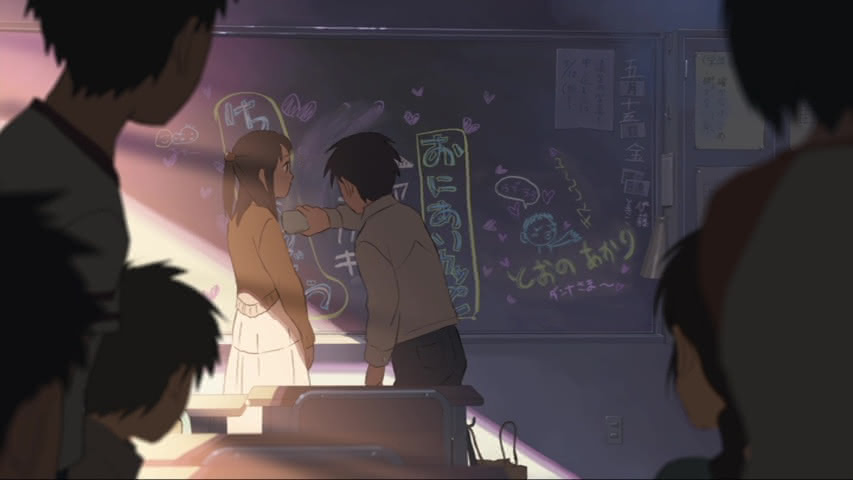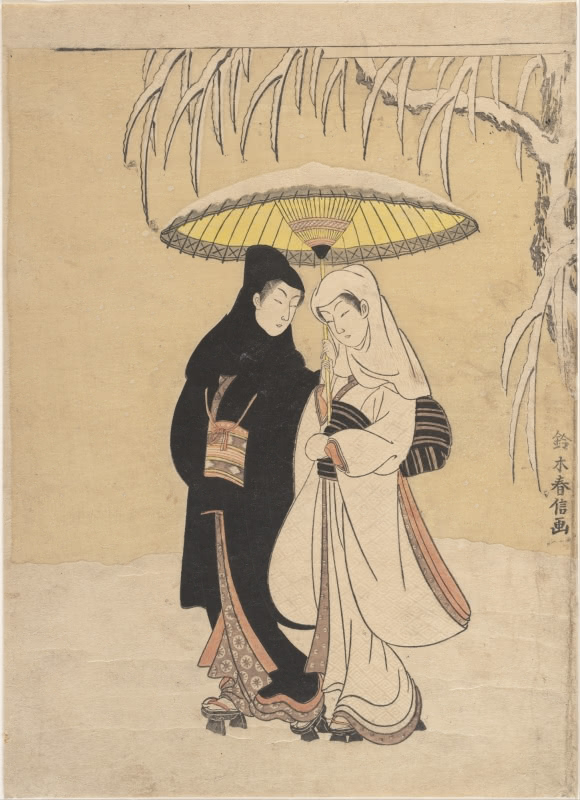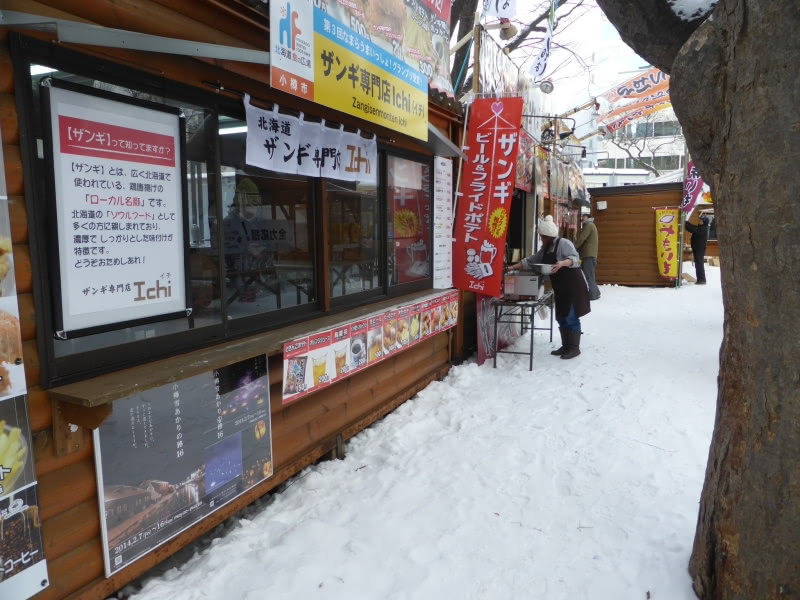I will provide a survey of English language sources in a Japanese concept: “the love umbrella” or ai ai gasa. Having watched a great number of anime over the last 15 years, I am familiar with a trope that places two characteres who are attracted to one another under the same umbrella on a rainy day. Moreover, I had seen a particular umbrella drawing used to tease characters who were perceived as being attracted to one another. However, it was not until I read a blog post about Teasing Master Takagi-san: The Movie, that I came to be familiar with the term ai ai gasa.
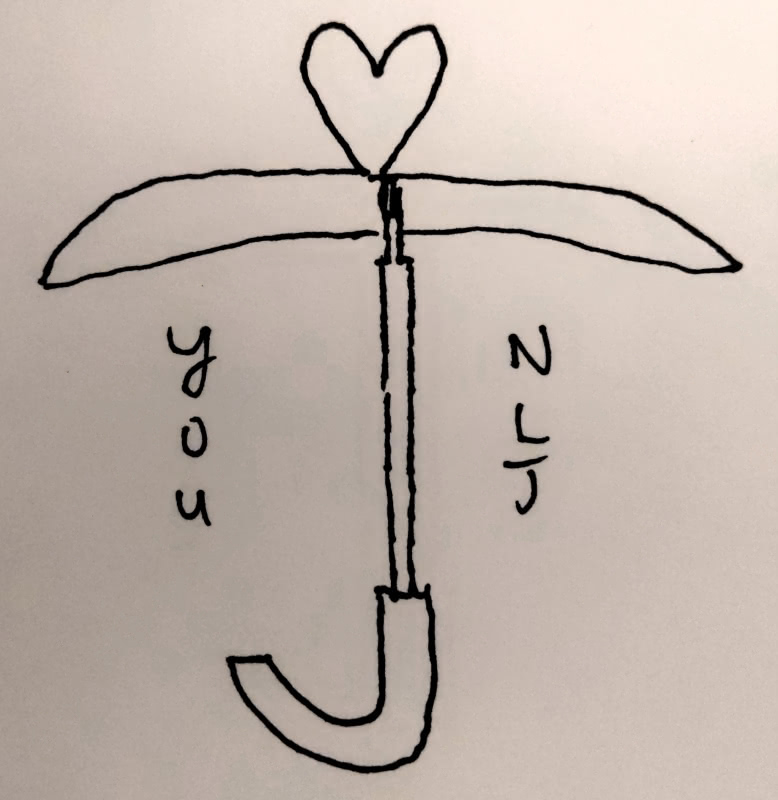
Before continuing, please note that this is not an authoritative article on ai ai gasa. I only speak English and, moreover, have never been to Japan. My project here, much like my project on examining the history of a purported Japanese love confession popularly attributed to Natsume Sōseki, tsuki ga kirei, is to gather as much information as I can from English-language sources.
The Genesis of My Project
I have documented in these pages that I am a fan of the Teasing Master Takagi-san anime adaptation. I selected its third and final anime season as my 2022 anime series of the year. The animated version of the series (the anime is based on a manga) was capped off by a movie, Teasing Master Takagi-san: The Movie, which aired several months after the conclusion of the third anime season. After finally getting around to watching the movie, I read a review by blogger AK at Everything is bad for you.
For those who are not familiar with Takagi-san, the series features the development of a relationship between two middle school students, Nishikata and Takagi (we never learn their first names in the anime). Takagi has an obvious crush on the often-oblivious Nishikata and this manifests in her teasing him while he tries to come up with ways to one-up her. The movie, like the third season, features genuine plot and relationship development, but it still has some of the amusing contests and teasing that the series is known for. I quote AK’s description of one such scene.1
She’s not the “teasing master” for nothing, easily getting Nishikata flustered by suggesting that they might have to share an umbrella on the way home from their last day at school before summer vacation and drawing what looks like a love umbrella on his notebook but that turns out to be a fishbone.
I remembered the scene (see screenshot below) and I caught what Takagi did there, but I had not been familiar with the term love umbrella.
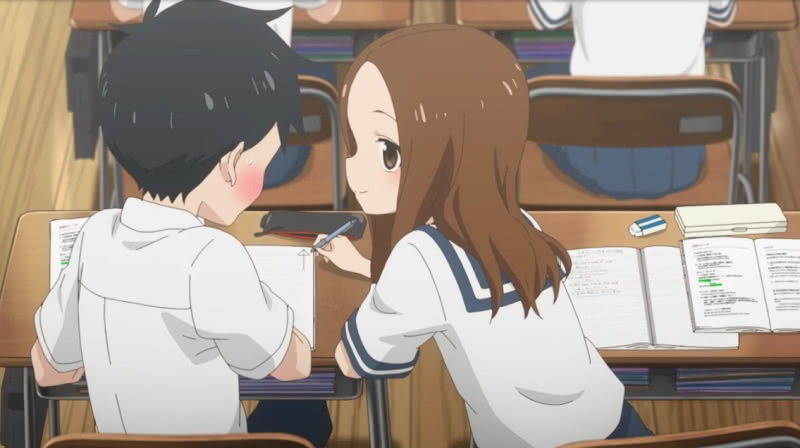
Fortunately, blogger AK included an external link on love umbrella.2 That link went to a page on the site of the Japan Culture Club, which includes a helpful drawing of an umbrella with a heart on top of it and Japanese names on the left and right side. To be sure, the drawing looks very much like Takagi’s “fish-bone.” Japan Culture Club included a description with the illustration:
Ai-Ai Gasa literally means ‘Love-Love Umbrella.’ Like American sweethearts carve their love on the trunk of a tree, Japanese sweethearts draw this as an expression of their love.
When I saw this, I picked up on a potential pun. I know that at least one reading of ai is love. But as I noted, my knowledge of actual Japanese is limited, so I would have to conduct further research.
(Note: The Japan Culture Club site lets you fill out a form to create your own ai-ai gasa for a special someone and send it via email. I have not tried it, but I thought it was worth noting.)
Ai-Ai Gasa Definitions From Around the Web
With the help of multiple search engines and the Zotero reference manager, I collected English-language sources on ai-ai gasa, sorted through them, and chose what I thought were the most informative ones to feature in this article.
First, let us turn to Wikipedia’s Wiktionary for its page on 相合傘 – or in English pronunciation, ai-ai gasa.3 I quote from the first part of its etymology explanation:
Compound of 相合 (aiai, “doing things together”) + 傘 (kasa, “umbrella”). The kasa changes to gasa as an instance of rendaku (連濁).
Following Wiktionary’s explanation, aiai in the context of aiai gasa refers to “doing things together.” Gasa, unsurprisingly, refers to umbrella. Thus, the actual meaning of aiai gasa is two people using an umbrella together. However, as we know, that is not the only meaning. Wiktionary revealed that my hunch from the Japan Culture Club article was mostly over the target:
相合傘 has a strong romantic implication, stemming in part from a play on words. The first two characters are pronounced あい (ai), the same as the word 愛 (ai, “love”), and thus the connotation is that both people under the umbrella are in love.
Ai-ai gasa may literally mean two people using an umbrella together, but the sound ai is also the sound for the word love. So one can jokingly say that ai-ai gasa means love-love umbrella, or just love umbrella.
Wiktionary provides two definitions for ai-ai gasa. Both definitions have a romantic connotation. The first:
an umbrella or parasol shared by two people, which alludes to a romantic situation
It translates a usage example for this definition as follows:
You can see a couple walking together under an umbrella over there.
Wiktionary also offers a figurative definition:
an infatuation between two people
See its usage example:
Those two are already sharing an umbrella, don’t you know.
The second one is fun. In this case, the speaker is not describing two people under the same umbrella but instead using the concept of sharing an umbrella as an indirect way to say that the two people are a couple. I will note as an aside that my favorite college English professor would not have approved of the don’t you know question formulation. I found an interesting anecdote from Mr. Wesley H.W. Hong, a man from Hawaii who taught English in Japan, explaining how he learned about ai ai gasa while teaching in Japan.4
I learned this from one of the Japanese teachers of English at a school where I teach. He had on the previous day seen a couple of our students, one male and one female, sharing an umbrella. He was good-naturedly teasing them as he used the anecdote to teach me this phrase.
Wiktionary offers a third definition, marked as slang, for “a love affair, a romantic relationship,” but offers no usage examples for us to study.
Let us now move from Wiktionary to Takashi’s Japanese Dictionary (Takashionary), which is a site run by Mr. Takashi Wada, a Japanese man who is studying for a PhD in Melbourne, Australia. Mr. Wada’s Takasionary has an entry for ai ai gasa.5 He offers the following definition:
相合傘 (ai ai gasa) means ‘to share one umbrella among two persons (esp. a couple)’.
Mr. Wada’s definition differs slightly from the Wiktionary definitions in that it acknowledges that the term ai ai gasa can be used literally (simply to describe two people sharing an umbrella) while emphasizing that it is used most often with a romantic connotation. The three Wiktionary definitions all refer exclusively to romantic situations.
Mr. Wada’s usage examples refer to romantic situations and how ai ai gasa is used among children. One issue I ran into in my tsuki ga kirei research was that it was not clear to me (accounts differed) how well-known the saying is among ordinary people in Japan. Here, Mr. Wada explains that ai ai gasa is commonly known: “[m]any kids (early teens) in Japan yearn for doing [ai ai gasa] with their crush.” (I know this is a common desire for 2D girls named Takagi.) He includes an image of a ai ai gasa drawing which differs from the first few we looked at only in that there is no heart on top of the umbrella. Regarding the ai ai gasa artwork, Mr. Wada provides two examples of when kids draw love umbrellas. The first example is to make fun of someone. We saw a variation of this with Takagi’s love umbrella, with the qualification that she actually had a crush on Nishikata and was trying to bait him into letting his feelings slip. We will look at a more malicious teasing example in a bit.
Mr. Wada also explains that kids may draw love umbrellas in secret with their name and their crush’s name. I suppose this is similar to an American kid writing the name of his or her crush in a notebook – sans the umbrella art. TV Tropes aptly compares ai ai gasa drawings to “Alice [arrow through heart] Bob” drawings.6 Mr. Wada then provides an example in a sentence, here I will only quote his translation:
If I have a girlfriend, I wanna share an umbrella with her on a rainy day.
Mr. Wada suggests that yearning examples for ai ai gasa which are somewhat distinguishable from the Wiktionary cases.
An Ai Ai Gasa Teasing Example in 5 Centimeters Per Second
Reading about ai ai gasa made me realize that I had actually featured part of a love umbrella drawing here at The New Leaf Journal. We already described Takagi’s ai ai gasa, now we will change one letter (in the English spelling, at least) and examine a scene involving Takaki from 5 Centimeters Per Second. See the following screenshot that I used in my article on Takaki’s memories of the time he spent in middle school with a girl named Akari:
Takaki was best friends with Akari. Because of this fact and their ages, their classmates took to teasing them. One day, Takaki walked into the classroom to find a sad-looking Akari standing in front of a blackboard full of jokes about them being together, with her classmates snickering behind her. Takaki took initiative, erasing the middle of the board, grabbing Akari’s hand, and running from the classroom with her (to be sure, this probably did not tamp down the rumors).
For that article, I chose to use a screenshot of Takaki erasing the blackboard since my point of emphasis was what he did. However, by choosing a screen capture of Takaki erasing the board, I chose a scene where much of a certain object of instant fascination had been eliminated. Below, I present a screen capture from the movie showing what the blackboard looked like a few seconds before Takaki entered the classroom and took initiative:
As you can see, that is a bona fide love umbrella. I usually leave subtitles out of screenshots, but I made an exception here since the subtitles highlight that the names under the umbrella are those of Takaki and Akari. Here, we see an example of kids using the love umbrella concept to tease their classmates.
Ai Ai Gasa in Art
I came across some evidence that the connection between a man and woman sharing an umbrella and lovers goes back quite a bit further. I turn to the Metropolitan Museum of Art’s description of Suzuki Harunobu’s woodblock print Lovers Walking in the Snow (Crow and Heron), which was completed some time between 1764 and 1772.7
First, see the painting:
Now for the pertinent part of the description:
Of all ukiyo-e prints of lovers, this one creates the most romantic and melancholic mood. Harunobu emphasizes the intimacy of two lovers strolling in the snow, even suggesting perhaps a michiyuki, a path to a love suicide. The couple walk together in the quietly falling snow, in what is known as an ai ai gasa pose, literally, the sharing of an umbrella and love.
(Emphasis added)
What is notable here besides the age of the print itself and its depiction of a couple walking under an umbrella in the snow is that the Met describes the painting as depicting an ai ai gasa pose and asserts that the definition of ai ai gasa literally encompasses sharing an umbrella and love.
Wikimedia Commons features other romantic prints of couples under umbrellas (including some from plays) from the same era. I will not produce the whole collection here, but I will note one additional print that caught my attention.8 Below, you will find a nineteenth century print by Utagawa Kuniyoshi:
Focus your attention on the far left side of the print where the two men are painting. Between the two men, you should find a familiar-looking umbrella with writing under it.
Ai Ai Gasa Sightings Around Japan
The Wikimedia Commons page for ai ai gasa depictions also includes many contemporary photographs. Again, I encourage you to see the whole collection there. Here, I will post a few examples.
First, we have a 2013 photograph of the former AKB48 Cafe & Shop in Akihabara of Ms. Sashihara Rino’s autograph in ai ai gasa form.9
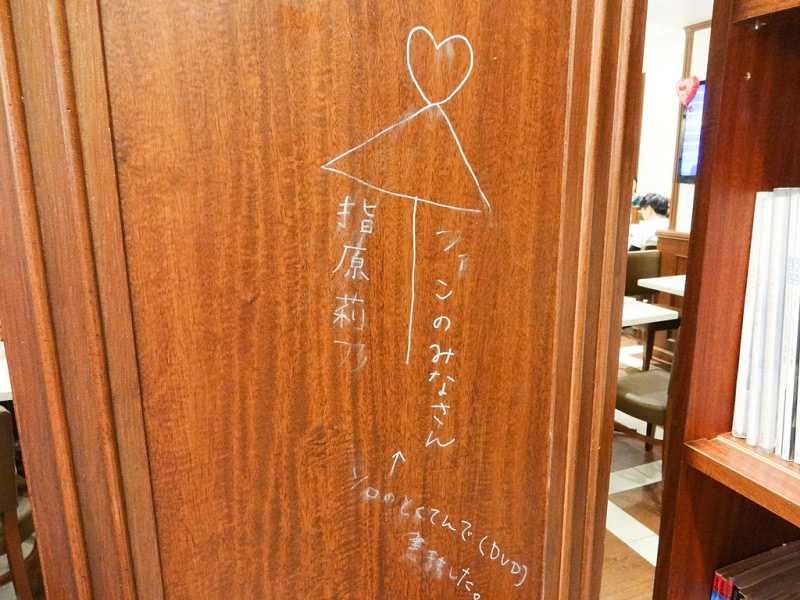
All I know about AKB48 is that it is an idol group, but I suppose that an autograph in ai ai gasa form is fitting.
Next we have an ai ai gasa carving seen near the Sumida River, photographed by Mr. Hajime Nakano.10
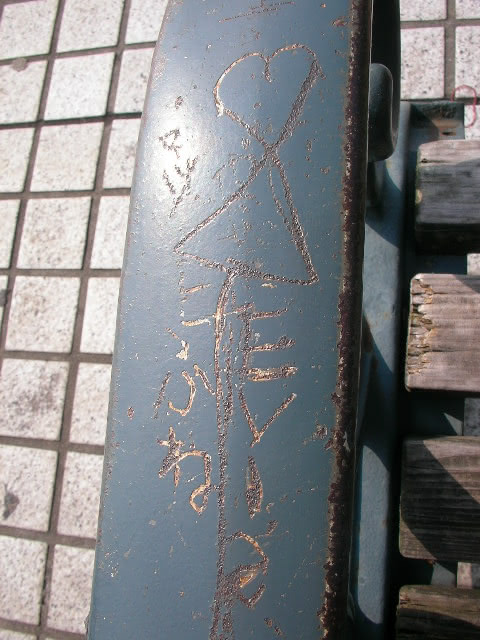
Finally, we have an ai ai gasa seen on a banner for a small restaurant (it looks like it is called Ichi and serves tea and snacks) in the snow.11
The banner has the ai ai gasa with a heart, similar to how it was depicted in the anime cases.
Ai Ai Gasa in Music and non-Anime Movies
I conclude with two non-anime examples of ai ai gasa in music and movies.
First, there was a 2008 single by a music duo called Tegomass called Ai Ai Gasa.12 The Wikipedia entry for the song describes the accompanying music video as follows:
In Tegomass’s video, the two [singers] are creating rain to make a young boy and girl walk under an umbrella together.
Finally, we have a 2018 film quite literally called Ai Ai Gasa. According to Asian Wiki, the “[m]ovie is based on the stage play ‘Ai Ai Gasa’ by [the] theatrical company ‘Tokyo Sereson Deluxe.’”13
Conclusion
This concludes our brief and I dare say fruitful survey of English-language sources on ai ai gasa.

While I am limited by lack of context, it appears that the connection between sharing an umbrella and love in Japan goes back a few hundred years to some extent or another. Moreover, the limited sources I put together suggest that the connection is part of mainstream culture in Japan, even if ai ai gasa scenes may be more common in fiction than in real life.
October 13, 2024 Update: I wrote a short post about an ai ai gasa sighting in a 2006 anime series called Living for the Day After Tomorrow.
Footnotes
- AK. “A Review of Teasing Master Takagi-San: The Movie.” Everything Is Bad for You (blog), April 29, 2023. https://sonatano1.wordpress.com/2023/04/29/a-review-of-teasing-master-takagi-san-the-movie/. ↩︎
- Japan Culture Club. “Love Umbrella–Japanese Love Symbolism!!” Accessed February 11, 2024. https://japan-cc.com/umbrella.htm. ↩︎
- “相合傘.” In Wiktionary, the Free Dictionary, February 2, 2024. https://en.wiktionary.org/w/index.php?title=%E7%9B%B8%E5%90%88%E5%82%98&oldid=77841786. ↩︎
- Tong, Wesley H.W. “Japanese Word for Today: アイアイ傘 (Love Umbrella).” Japanese Word for Today (blog), July 3, 2015. https://japanese-word-for-today.blogspot.com/2015/07/love-umbrella.html. ↩︎
- Wada, Takashi. “Meaning of 相合傘 (Ai Ai Gasa): Lovely Dream of Japanese Kids – Takashi’s Japanese Dictionary,” May 31, 2021. https://takashionary.com/aiai-gasa/. ↩︎
- TV Tropes. “Umbrella of Togetherness.” Accessed February 11, 2024. https://tvtropes.org/pmwiki/pmwiki.php/Main/UmbrellaOfTogetherness. ↩︎
- The Metropolitan Museum of Art. “Suzuki Harunobu | Lovers Walking in the Snow (Crow and Heron) | Japan | Edo Period (1615–1868).” Accessed February 11, 2024. https://www.metmuseum.org/art/collection/search/45085. ↩︎
- Utagawa Kuniyoshi. 教訓善悪子僧揃. 国立国会図書館. Accessed February 13, 2024. https://commons.wikimedia.org/wiki/File:NDL-DC_9367566-03_Utagawa_Kuniyoshi_crd2.jpg. ↩︎
- Johnson, Dick Thomas. AKB48 カフェ&ショップ 秋葉原 カフェ 指原莉乃 サイン. October 18, 2013. AKB48 Cafe & Shop Akihabara: Cafe, Sashihara Rino’s Autograph. (URL). ↩︎
- NAKANO, Hajime. Sumida River. August 21, 2005. Sumida river. https://commons.wikimedia.org/wiki/File:Sumida_river_(35785756).jpg. ↩︎
- 知英高見. 20140204095704. February 4, 2014. 20140204095704. (URL). ↩︎
- “Ai Ai Gasa.” In Wikipedia, July 12, 2023. https://en.wikipedia.org/w/index.php?title=Ai_Ai_Gasa&oldid=1164953514. ↩︎
- “Under One Umbrella – AsianWiki.” Accessed February 11, 2024. https://asianwiki.com/Under_One_Umbrella. ↩︎
